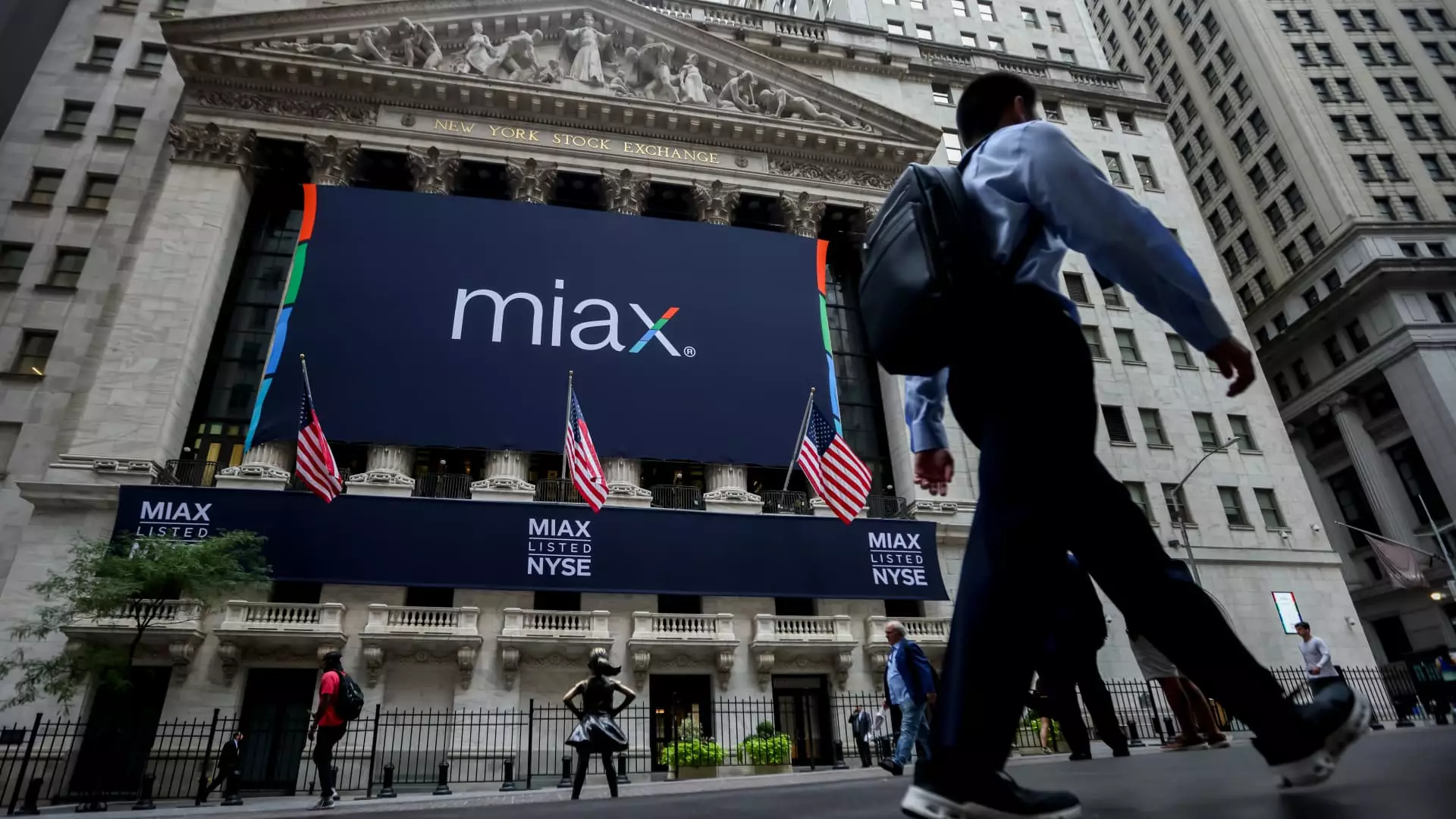The stock market’s midday swings are often dismissed as mere volatility, yet they serve as a mirror to the complex, often contradictory forces shaping our financial landscape. Today’s notable movements — from surging newcomers to crashing veteran giants — expose not just fleeting market sentiments but underlying structural vulnerabilities. Companies are being pushed and pulled by a cocktail of optimism and fear, revealing that even the most resilient sectors are vulnerable to systemic fragility. While some companies, like Miami International Holdings, showcase the daring spirit of entrepreneurship, others, such as Amcor and Ibotta, illustrate how economic pressure manifests in plummeting stock prices.
This volatility isn’t merely a reflection of individual company fortunes; it signals a broader crisis of confidence. Investors are increasingly wary, grappling with the intertwining risks of geopolitical tensions, inflation, and monetary tightening. The synchronized decline of established firms and the meteoric rise of fresh market entrants suggest a market in flux—one where speculative fervor risks overshadowing fundamental stability. As a conservative-leaning observer, I view this environment as a cautionary tale: unchecked optimism breeds bubbles, while stubborn pessimism suppresses growth. The current swings reveal an imbalance that, if unresolved, could lead to a more profound economic correction.
The Hard Truth Behind the Sectoral Winners and Losers
The dramatic movements within various sectors highlight an uneven landscape that favors some while punishing others. The tech sector, exemplified by SiTime’s modest gain following UBS’s optimistic coverage, underscores potential innovation amidst a cautious environment. Meanwhile, the semiconductor space suffered significant setbacks, as Coherent’s 24% decline persisted despite improved outlooks, reflecting ongoing concerns about supply chain constraints and margin pressures.
Retail, often considered a bellwether of consumer health, displayed mixed signals. Advance Auto Parts’ +9% dip following a lowered outlook exemplifies the market’s skepticism about the durability of economic recovery, especially amid rising tariffs and inflationary headwinds. Similarly, Tapestry’s 15% fall following a disappointing forecast highlights how even high-end brands are not immune to macroeconomic shocks or changing consumer preferences.
The energy of market newcomers like Miami International Holdings underscores a dangerous optimism about the financial sector, fueling speculation that may not be sustainable in the long term. Paramount’s volatile rollercoaster—soaring 37% then declining over 6%—demonstrates how market sentiment can be manipulated or driven predominantly by hype rather than fundamentals. This pattern of erratic movements hints at a market teetering on the brink of a correction, where the disconnect between prices and intrinsic value could widen.
Investors and Policymakers: Watching the Ticking Time Bomb
The data set signals more than just individual stock performances; it alerts us to a looming systemic vulnerability. The divergence between bullish hope and bearish reality raises questions about the sustainability of current valuations. The soaring IPO of Miami International Holdings exemplifies the allure of quick profits and risk-taking, yet such exuberance could turn sour if economic conditions worsen.
Meanwhile, large corporations like Deere adjusting their forecasts reflect cautious pragmatism—a necessary stance in an era of inflation, interest rate hikes, and geopolitical uncertainties. This cautious attitude suggests that even industry giants acknowledge the cracks forming beneath the surface. The divergence is stark: some companies thrive on aggressive expansion or innovative breakthroughs, while others falter under the weight of macroeconomic headwinds.
For policymakers, the market’s fragility underscores the peril of complacency. Central banks and regulatory bodies must tread carefully between tightening policy to curb inflation and avoiding the precipice of a recession. The recent plunge of defensive plays like Ibotta and the decline in automotive and manufacturing stocks suggest that the foundation of economic growth may be more fragile than it appears.
In my view, the current landscape is a stark reminder that markets are not divorced from political and economic realities. A centrist, center-right perspective insists on pragmatic reform—balancing market freedom with sound regulation—to prevent an all-out collapse. The recent volatility should serve as a wake-up call: unchecked optimism and complacency threaten to turn into a full-blown crisis, with devastating consequences for the average investor and the broader economy alike.

